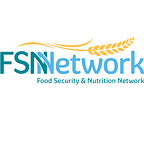Saving Together: How VSLAs Help Communities in Emergencies
By: Beja Turner and Natacha Brice, CARE
In times of emergencies, communities often face challenges that require creative and sustainable solutions. From access to necessities to rebuilding their livelihoods, the road to resilience can be long. CARE has developed an innovative approach through the Village Savings and Loan Association in Emergencies (VSLAiE) model to address the unique needs of communities during crises. This blog explores what VSLAiE is all about and how it can make a positive impact on people’s lives.
What is VSLAiE?
Through traditional VSLAs, community members have the space to come together to save money, support one another, and create a safety net during difficult times. In emergency contexts however, the VSLAiE approach builds on CARE’s decades-long history of implementing VSLAs by introducing the following four components which strengthen the ability of VSLAs to integrate appropriately within humanitarian programming when an emergency occurs and to effectively meet the needs of crisis-affected people.
· Preparedness: This component emphasizes the establishment of plans to address the specific needs and constraints of women in emergencies as a necessary first step in coordinated humanitarian response.
· Linking VSLA and Cash and Voucher Assistance (CVA): VSLAs and CVA can be highly complementary interventions, but they need to be managed carefully to ensure that they do not negatively impact one another. The successful integration of VSLAs and CVA requires an assessment of markets, gender norms, and other needs as well as appropriate identification and targeting of households.
· Flexible VSLA Cycles: The VSLAiE model allows for a shortened cycle less than the traditional 12-month VSLA to account for adapting to the implementation context and to ensure that it can more appropriately deal with humanitarian programming constraints.
· Building Economic Resilience: Through livelihood programming integration, mature groups that have completed at least one savings cycle can increase their financial resilience by engaging in activities that train members on business and entrepreneurship, financial education, and financial startup grants for individual and group income-generating activities.
CARE has piloted this VSLAiE model in three countries: Jordan, Yemen, and Syria. From this research, this is what we have learned:
· Community Empowerment: In emergencies, traditional financial systems may collapse, leaving people without access to funds. VSLAiE steps in by creating a community-based financial network where local community members form groups, pool resources, and establish a savings and loan system. This approach not only ensures financial stability but also fosters a sense of community empowerment. Members can take out small loans from the savings pool to invest in income-generating activities and kick-start small businesses. 70% of members of VSLAs in Jordan reported that VSLAiE had a positive impact on their income.
· Flexibility and Adaptability: The VSLAiE model recognizes the dynamic nature of emergencies. Whether it’s a natural disaster or a conflict, communities need adaptable solutions. VSLAiE provides this flexibility, allowing groups to adjust their savings and loan activities based on the evolving needs of the community. In both Yemen and Syria, groups use “solidarity” funds to help others in need in their community for whatever needs may arise for both members and nonmembers.
· Risk Reduction: In times of crises, financial insecurity is a significant concern, and VSLAiE addresses this by promoting risk reduction strategies. Through collective savings and microloans, communities can better cope with unexpected challenges, such as sudden expenses or the need for immediate shelter. In Syria, the number of VSLAiE members who reported being debt-free rose by over 20%!
· Capacity Strengthening & Combatting Social Norms: CARE’s VSLAiE model goes beyond providing financial support; it also focuses on strengthening the capacity of community members and challenging negative gender norms. Training sessions cover financial literacy, entrepreneurship, and other essential skills. This holistic approach equips individuals with the tools they need to rebuild. With CARE’s focus on women, VSLAiE also works to address social norms to increase women’s leadership in the home and the community. In Syria, 94% of VSLAiE households stated that decisions on income are now made between both the female and male heads of household, an increase from 63% at the beginning of the VSLAiE pilot.
The VSLAiE model is not just about providing financial support; it’s about fostering a sense of community, resilience, and empowerment. By putting the community at the center of the solution, CARE ensures that the program is sustainable and tailored to the specific needs of each community it serves.
Conclusion: Building Sustainable Solutions for the Future
While VSLAiE has proven effective, it is essential to acknowledge the challenges faced in implementing such models during emergencies. These may include logistical hurdles, cultural considerations, and the need for ongoing support. Through continuous evaluation and learning, CARE works to refine and improve the VSLAiE model to address these challenges effectively. By fostering community-led savings, providing accessible microloans, offering financial education, and being flexible in its approach, VSLAiE is making a real difference in the lives of those facing the toughest challenges. As we look to the future, it’s clear that this innovative model will continue to empower communities and contribute to building a more resilient and self-reliant world.
